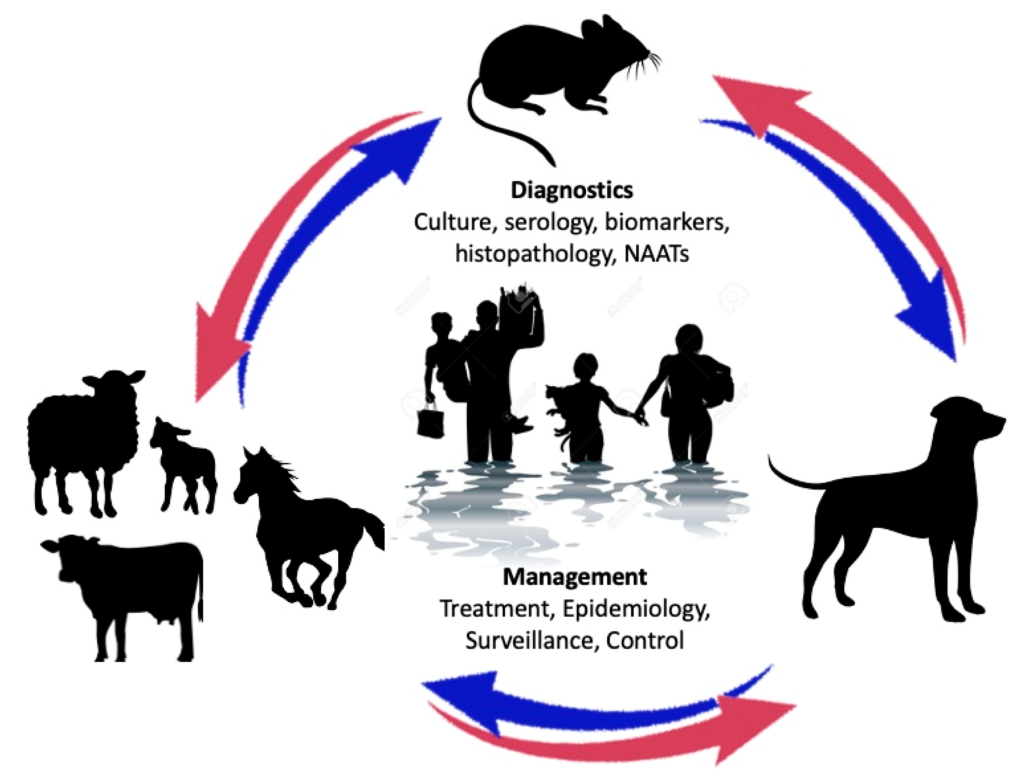
The western District of Nickerie has been struggling with a rat invasion for several months, leading to several human deaths due to Weil’s disease. Although a suggestion was made to introduce cats, which are notoriously absent in the rice district, this practical and nature-friendly remedy still needs to be adopted. In the meantime, the rat population continued to grow and wreak havoc on the rice district’s agricultural harvests.
Rat poison
In a well-intended but maybe misguided gesture, 500 kilograms of rat poison was donated to the rice district. To date (2 January 2023), 10 cows and 17 goats have died mysteriously. According to Parliamentarian Yogi in an article on Starnieuws: “Rat poisoning should be carried out under the supervision of experts. And it must be checked that the correct pesticide is used.”
Dr. Julian Pengel, neurologist, believes: “…that the choice of an anticoagulant is the right one. If one starts to use neurotoxins, you are really on the wrong path! That is according to the scenario that was described of what happened. The farmers purchased illegal poisons at first. ”
He continues and emphatically states: “Neurotoxins (acetylcholine esterase inhibitors), instead of blood-clotting agents (coumarin anticoagulants), should never be used for this purpose! Firstly, these substances are water-soluble in contrast to blood-clotting agents, and can therefore spread more quickly and, for example, end up in water that humans and animals consume. Secondly, it is a far too dangerous poison which, in the event of accidents, is hardly treatable for humans and animals and often ends fatally.”
Rat poison, also known as rodenticide, is a widespread and harmful pest control product used to kill rats, mice, and other rodents. Rat poison poses a severe risk to non-target animals, including birds of prey, carnivores, and even humans, due to its toxic and persistent effects.
According to recent studies and reports, rat poison can cause various adverse effects on wildlife, livestock, and the ecosystem. For example, rat poison can be ingested by predatory animals that feed on poisoned rodents, leading to a process called “secondary poisoning,” which can cause internal bleeding, organ damage, and death. Rat poison can also affect animals’ reproductive and immune systems and impair their behavior and cognitive abilities.
Rat poison can be harmful to livestock if ingested. Livestock may accidentally eat rat poison if left in an area where they have access to it or eat feed contaminated with it. Ingestion of rat poison can lead to various symptoms in livestock, including vomiting, diarrhea, loss of appetite, weakness, tremors, seizures, and difficulty breathing. In severe cases, ingestion of rat poison can be fatal to livestock.
Furthermore, rat poison can contaminate the soil, water, and plants and enter the food chain, affecting the health and survival of many species, including endangered ones. Rat poison can also pose a risk to humans, especially children, who consume contaminated food or water or come into contact with poisoned animals, including pets.
Some rat poison products contain warfarin, bromadiolone, or coumatetralyl, anticoagulant chemicals that interfere with blood clotting, causing internal bleeding and death. These poisons can be lethal to humans in high doses. They may require hospitalization and treatment, such as vitamin K injections, to reverse their effects.
One Health Approach
Because of these impacts, adopting a One Health approach that recognizes the interconnectedness of human, animal, and environmental health and promotes the use of safer and more sustainable pest control methods is essential.
One Health strategies can include:
- Sanitation: Keep one’s property clean and free of food debris and clutter. Rats are attracted to food and shelter, so maintaining a clean environment will make it less attractive to them.
- Habitat modification: Removing sources of shelter and food for rats, such as piles of wood or debris, can help reduce their population.
- Exclusion: Sealing holes and gaps in buildings and other structures can prevent rats from entering and nesting on one’s property.
- Hiring a rat catcher can be an effective way to remove rats from one’s property and prevent them from returning, without relying on chemicals or other potentially harmful methods. However, it’s important to ensure that the rat catcher uses humane methods to capture and remove the rats, and that any trapped rats are released in a suitable location away from human habitation.
- Education and awareness: Educating people in the community about the importance of One Health and the steps they can take to prevent rat infestations can help reduce the spread of these pests.
- Collaboration: Working with other stakeholders, such as local authorities, health professionals, and environmental organizations, can help coordinate efforts to control rat infestations and address other One Health issues in the community.
- Encouraging natural predators of rats, such as owls and snakes, to live on one’s property can be an effective method of controlling rat infestations in agricultural areas. This approach aligns with the principles of One Health, as it involves considering the interconnections between human, animal, and environmental health and taking a holistic approach to addressing health issues.
By encouraging natural predators to live on one’s farm, one can help control the rat population in a more environmentally-friendly and sustainable way, without relying on chemicals or other potentially harmful methods. However, it’s important to consider the potential impacts on other species and the ecosystem as a whole when encouraging the presence of natural predators.
It is also important to consider the potential impacts on the ecosystem as a whole when removing rats from an area. In some cases, removing rats from an ecosystem can have unintended consequences, such as triggering a population explosion of another species that was previously kept in check by the rats. Therefore, it’s important to consider the potential ecological impacts of rat control measures and to take a cautious, well-informed approach.
Dr. Pengel emphasizes: “…that there needs to be better regulation and control on the use of poisons. And that the use of poison should be restricted, and preferably the alternative measures mentioned in the One Health approach should be taken. According to Pengel, the decision to work with poison is the right one for this mass disruption. But we should not always go for this rigorous method!”
We can protect the health and well-being of all living beings and preserve the balance and diversity of our planet by addressing the issue of rat infestations comprehensively and collaboratively.
PREZODE Initiative
Green Heritage Fund Suriname is a member of the PREZODE (Preventing ZOonotic Disease Emergence) initiative. Prezode is an innovative international initiative that aims to understand the risks of emerging zoonotic infectious diseases. Prezode wishes to develop and implement innovative methods to improve prevention, early detection, and resilience to ensure rapid response to the risks of emerging infectious diseases of animal origin. GHFS calls on the Surinamese government to become a signatory of the Prezode Initiative.
Advice:
It is essential to use caution when using rat poison and to store it in a place where it is not accessible to livestock. You should contact a veterinarian for treatment if you suspect your livestock may have ingested rat poison.

2 Responses
Hoe kan ik in contact komen met de auteur? Kan die mij mailen of iets dergelijks?
U kan een email sturen naar [email protected]